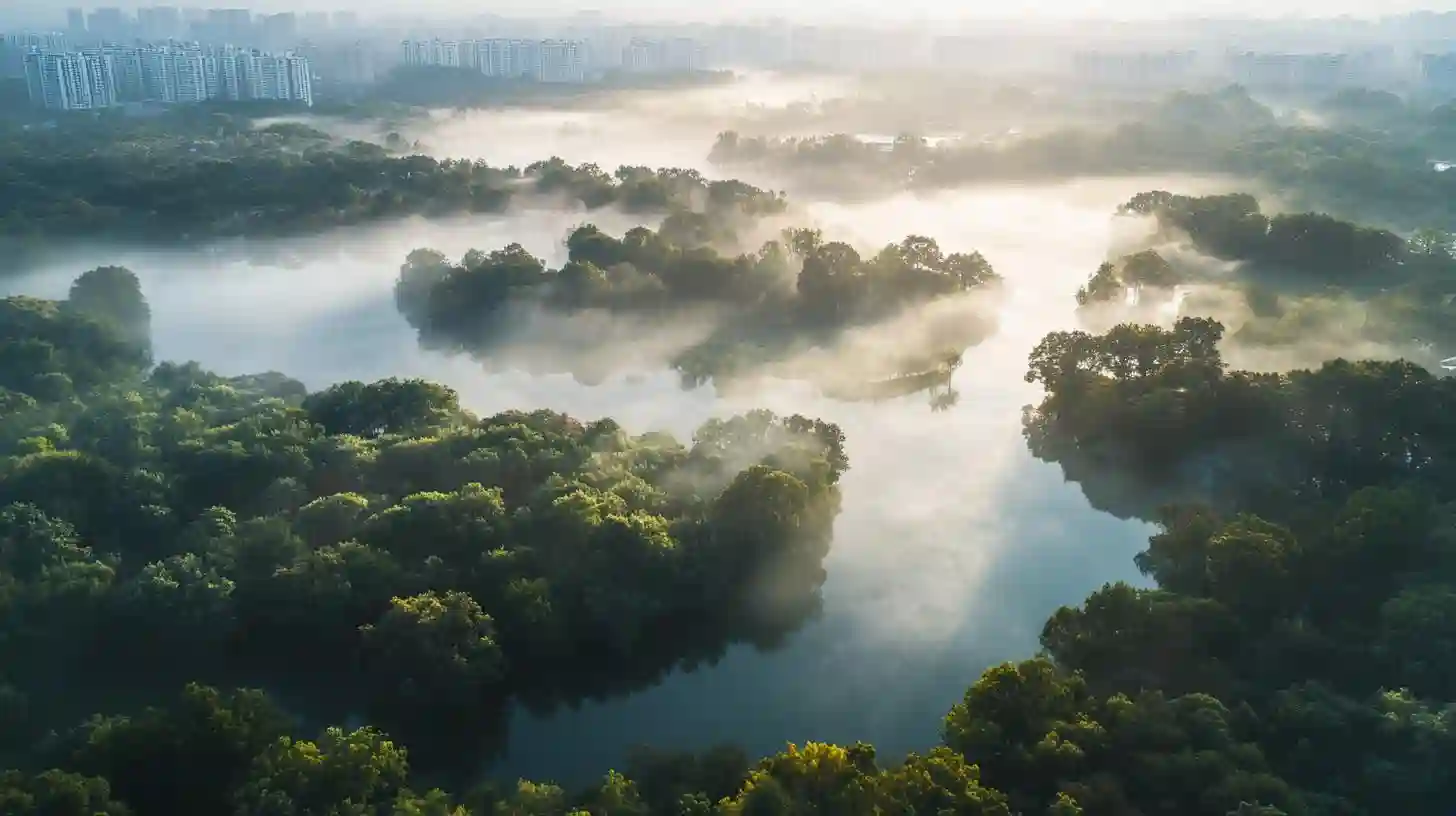
Nature’s fog has an undeniable charm that captures the imagination of both everyday citizens and scientific minds. This ethereal phenomenon can blanket entire landscapes, transforming mundane views into mystical scenes where the familiar becomes otherworldly. Streets, parks, and natural vistas are shrouded in a soft, gray veil, muffling sounds and softening shapes, creating an ambiance that is somewhat dreamlike. This tapestry of moisture hanging in the air speaks to something primal within us, evoking feelings of nostalgia, mystery, and tranquility.
For many people, experiencing fog feels like entering a different realm. The world appears slower, more introspective, and even a bit romantic as one walks through a landscape draped in the fog’s embrace. Iconic cityscapes take on a more mystical character when paired with this natural blanket. Skyscrapers loom like giants emerging from a sea of clouds, while streets become unrecognizable, with their outlines softened and details obscured. There’s an irresistible urge to take a stroll, to breathe deeply, soaking in the crisp, cool air, allowing thoughts to drift like the tendrils of fog itself.
The allure of fog is not limited to its sensory delights; it has also piqued the interest of scientists and researchers. Fog forms when the atmosphere cools and air becomes saturated with moisture. Under certain conditions, tiny water droplets condense around particles in the air, giving rise to this ephemeral curtain. Atmospheric scientists study fog to understand its impact on weather patterns, climate change, and ecosystems. Fog is particularly prevalent in coastal areas and valleys, where its cooling effect can have significant implications for local climates and biodiversity.
In coastal regions, fog serves as a critical resource for ecosystems. Many plants and animals have adapted to survive in these foggy environments, often relying on moisture that condenses from the air. For example, certain species of trees, such as the coastal redwood, have been known to collect water from fog through their leaves, a vital source of hydration, especially in drier months. This interaction between fog and flora highlights the interconnectedness of ecosystems and emphasizes the importance of preserving these delicate habitats.
On a larger scale, the study of fog also reveals valuable insights into climate dynamics. Scientists are increasingly focused on how changing weather patterns affect fog formation and persistence. As the global climate continues to shift, researchers are tasked with understanding how these changes will impact ecosystems that depend on fog. Some regions may experience a decline in fog frequency, which could have dire consequences for wildlife and plant communities accustomed to this moisture. Knowing this information allows for more informed conservation efforts and strategies to mitigate the effects of climate change on vulnerable habitats.
Fog also serves as a natural phenomenon that stimulates creativity and artistic expression. Writers, painters, and photographers often find inspiration in its elusive qualities. The atmospheric effects of fog can evoke strong emotional responses, infusing art with a sense of mystery or contemplation. For photographers, capturing fog can be both a challenge and a joy, as it adds depth, texture, and mood to images. Each photograph taken in fog can convey distinct feelings, from eerie and haunting to serene and calming.
Cities and towns put their own spin on fog, often embracing its magic in local culture and folklore. Stories of ghosts and spectral figures emerge in conjunction with the swirling, low-lying clouds. Local events may celebrate fog with festivals, art installations, or guided walks through fog-laden trails. Communities harness the natural beauty and enigma of fog, fostering a sense of belonging and identity. The visual poetry created by fog and its prevailing mystery weaves itself into the collective narrative of a place, allowing residents to connect with their surroundings more deeply.
Nature’s foggy veil enchants everyone it touches, fostering an appreciation for the beauty and intricacy of the world we inhabit. From the everyday beauty experienced while walking in a fog-laden park to the vital role fog plays in our planet’s climate and ecosystems, it encapsulates a graceful interplay of science, art, and personal experience. As researchers continue to demystify its complexities, and artists draw inspiration from its mystique, fog remains a captivating phenomenon that bridges the gap between ordinary life and the extraordinary wonders of nature. Each foggy day invites exploration and reflection, rekindling a sense of wonder in the ordinary seams of our lives.